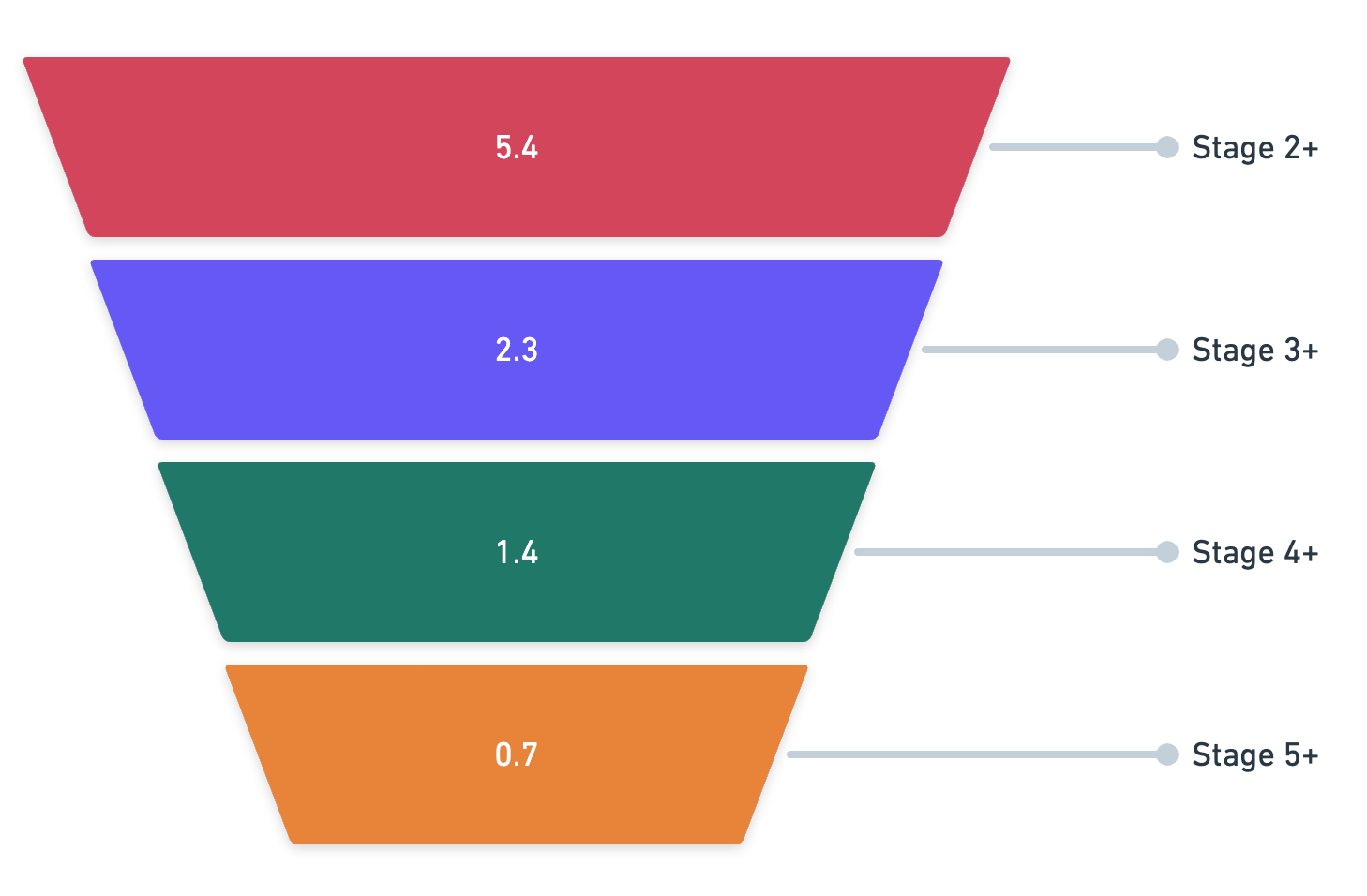The most consistent sales leader I’ve worked with hit plan 27 consecutive quarters. How can a sales leader develop similar repeatability? Much goes into it here are the reports he used to manage his team at the board level.
The PQR (pipeline-to-quota) funnel is first. Pipeline is the total value of the accounts within a stage or later. Quota is the aggregate quota on the street for the quarter. Divide P by Q to get PQR.

This hypothetical startup amassed 2.3x PQR at Stage 3+. This team is off to a good start with 0.7x of the quarter’s number in Stage 5+ at the beginning of a quarter. Each business’s PQR funnel will differ depending on their sales cycle, ACVs, and overall motion. For stage definitions, see [1].
Will the sales leader attain plan? It depends on the sales cycle of the product. If the sales cycle lasts 45 days, the startup has time to move Stage 2 opportunities to Stage 6 before quarter end. If the sales cycle is 120 days, well…it’s going to take some heroics or heavy discounts.
Looking at the quarter in isolation is useful, but longitudinal tracking provides more insight into future performance. Hence, the longitudinal PQL report.

From this report, we glean the top of the funnel is exceptionally strong, but the conversion of that funnel into meetings fell steeply, from 3 to 2.4x.
Why? Because Stage 3 leads move quickly to Stage 4 proposal, rather than spending time in meetings (spike in green line). We should cross-check if this squares with a drop in sales cycle for the period.
The startup starts the quarter with 70% of the target bookings in late-stage conversations. That’s a promising start and the data suggests the team will perform similarly this quarter to previous quarters.
Now onto the bottoms-up analysis. Summing the estimates from each sales manager provides a different lens.

Like the tops-down math, the aggregate sales manager forecast confirms the sales team has chalked up 74% of the number for the quarter in late-stage. If the chips fall the right way, the AEs may achieve 176% of its number, subject to sales cycles. For stage definitions, see [2].
Comparing the blue lines, we see sales managers’ estimates are more conservative than the top-down figure. In my experience, the bottoms-up figures tend to be more accurate.
The last step is to track the conversion rates of leads from different stages to close. Most of the time, these conversion rates remain relatively steady, especially as a startup scales. Assuming this is the case, these reports suffice to assess the health of a pipeline and the probability the company will hit its number.
By charting the longitudinal PQR ratio top-down and bottom-up, a sales leader can identify when a sales team will attain plan and which parts of the funnel differ in performance from quarter-to-quarter. In between these two estimates likely lies the ultimate performance of the business.
Definitions
[1] Salesforce defines the stages of a deal as:
- Prospecting: discover an account
- Lead qualification: could the account be a fit?
- Demo/meeting: sales meeting
- Proposal: send over terms
- Negotiation: discuss how to do business
- Opportunity won: signed contract
[2] The terminology here differs from above
- Won is a signed deal
- Forecast are accounts that the managers expect to close
- Upside are accounts that may close in the quarter but have enough risk in the process timing or decision that the team shouldn’t count on them